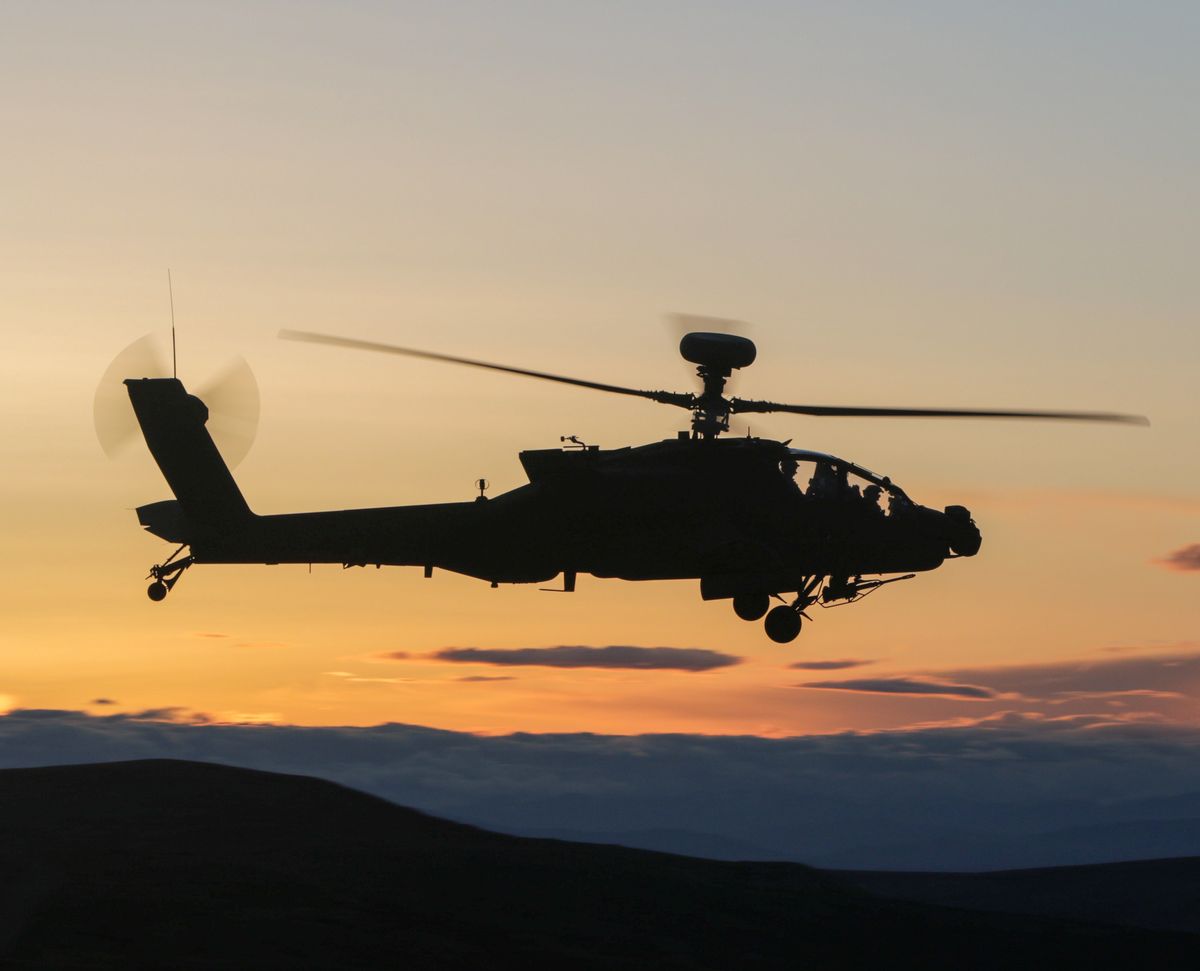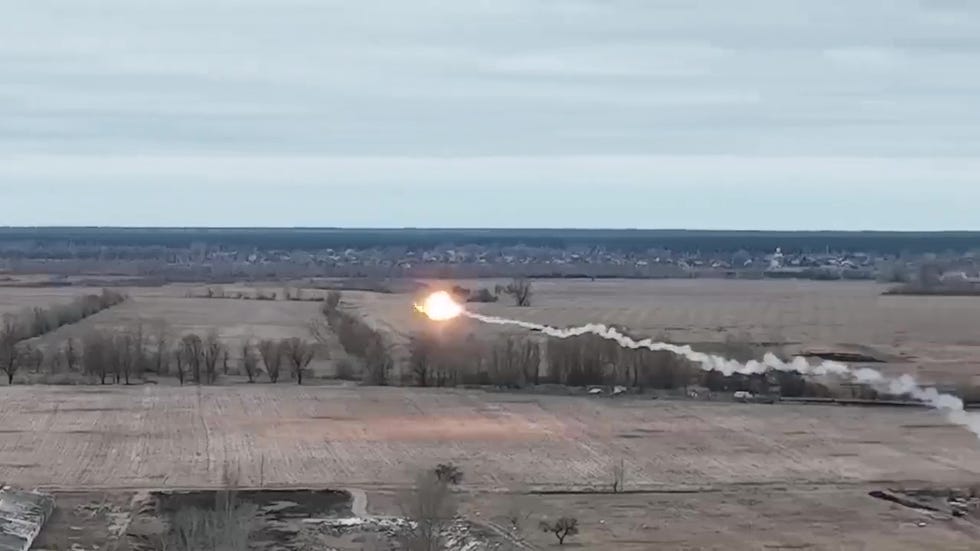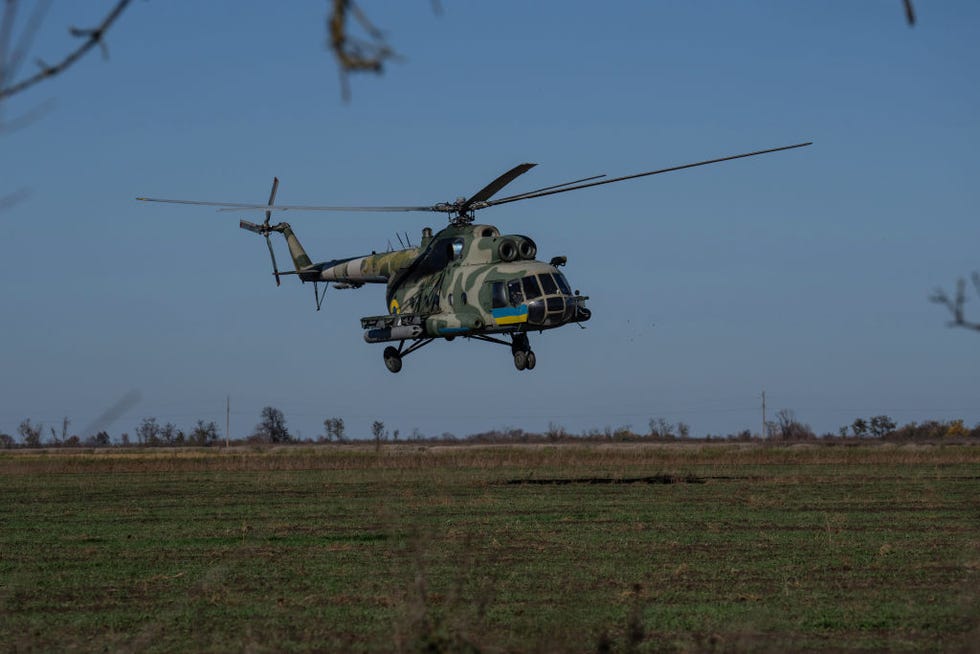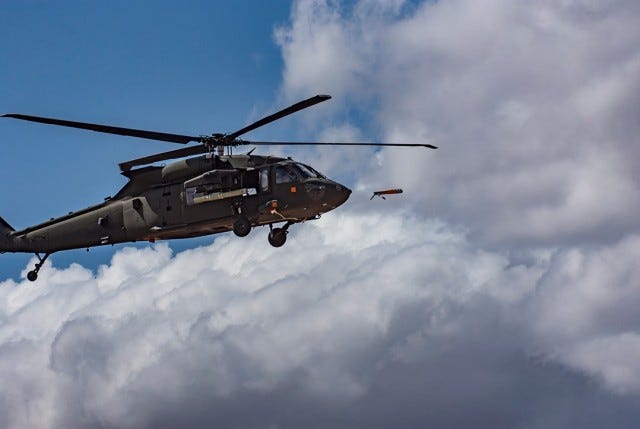KYLE MIZOKAMI

The Russian invasion of Ukraine has not been kind to the attack helicopters participating, with more than 60 lost since the war began.
In the last 20 years, attack helicopters have proven themselves vulnerable to ground fire, especially shoulder-fired surface-to-air missiles.
Attack helicopters must change with the times—or become obsolete.
Perhaps one of the most motivational sights on the modern battlefield is a friendly attack helicopter, bristling with guns, rockets, and missiles, dipping low as it plunges forward to deal death and destruction upon the enemy.
Yet, evidence suggests that if the attack helicopter survives on the modern battlefield that image may have to change, with armed helicopters attacking their targets far behind friendly lines. Blame it on the inherent nature of helicopters themselves, and the proliferation of shoulder-fired anti-aircraft missiles that can swat them like flies.
Here’s what you need to know about the future of the attack helicopter.

The moment a Ukrainian MANPADS missile strikes a Russian attack helicopter, Ukraine, 2022.Getty Images
The Russian invasion of Ukraine is now 455 days old. Both Russia and Ukraine have lost a large number of attack helicopters over the course of the conflict; according to the Oryx blog, Russia has confirmed losses of at least 62 attack helicopters to combat, including 35 Kamov Ka-52 “Alligators”, 12 Mil Mi-28 “Havocs”, 9 Mi-35s, and 6 older Mi-24 “Hinds.” These are devastating losses, with the Ka-52s lost representing 30 percent of Russia’s entire fleet of “Alligators.”
Ukraine has made out slightly better, losing just four Mi-24 attack helicopters, but those four still represent over 10 percent of its entire force of armed helicopters.
What caused such heavy losses? As the attacker, Russia’s helicopters will be put in more vulnerable situations than Ukraine’s, as the helos are sent to areas where the enemy is expected to be dug in and waiting for them. But magnifying the problem is the huge number of short-range surface-to-air missiles that NATO and the west sent to Ukraine. NATO has sent thousands of man-portable air defense systems (MANPADS), including at least 2,557 FIM-92 Stingers and an unknown number of Piorun, Sungur, Strela-2, Igla, and RBS-70 missile systems. These missile systems, easy to operate and deadly with a high degree of accuracy, have scored several high-profile shootdowns of Russian fixed-wing and rotary-wing aircraft.
Float Like a Butterfly, Sting Like a Bee

An AH-1G Cobra flying over Vietnam, 1968. After the war, attack helicopters were brought to Central Europe, but how they would fare against modern air defenses was an unanswered question.Getty Images
The modern attack helicopter was developed during the Vietnam War. The U.S. Army made extensive use of helicopters to transport troops to and from the battlefield, and these often came under intense ground fire. After first modifying transport helicopters to carry rockets and additional machine guns, the Army decided it wanted a dedicated, armed helicopter capable of escorting transport helicopters and serving in the role of flying artillery.
The result was the AH-1 Cobra, a helicopter that carried a 20-mm cannon and 70-mm rockets. After the war, the Army adapted the Cobra to serve in the anti-tank role, arming it with anti-tank missiles. In the event of World War III and a Soviet invasion of Europe, Cobra helicopters with TOW anti-tank missiles could quickly position themselves to blunt fast-moving Red Army tank attacks.
Still, despite their clear advantages, there was a nagging question of how vulnerable they were against a modern, well-equipped enemy like the USSR. Helicopters were fast and had considerable firepower, but the use of rotors made them slower than jets, and the need to keep weight at acceptable levels meant they were less well-armored than tanks. Helicopter losses in Vietnam were enormous, with the U.S. losing 5,607 helicopters of all types over the course of the war, with most downed by small arms or light anti-aircraft fire.
World War III in Europe never happened, and the vulnerability of attack helicopters was never fully put to the test. There were, however, signs before the Ukraine war that helicopters were in trouble: in 1999, the U.S. Army deployed attack helicopters to Albania to intervene in the Yugoslav civil war but, among other reasons, the helicopters never flew into combat because of the threat of “small arms fire, anti aircraft guns, and shoulder-fired missiles.” In March 2003, during the invasion of Iraq, 32 AH-64 Apache attack helicopters took off to fly over enemy lines and attack the Republican Guard Medina division. One helicopter was shot down and several others were heavily damaged by enemy fire.
Can the Attack Helicopter Survive?

Ukrainian helicopters, such as this Mi-8 flying near Kotlyareve, Mykolaiv oblast, fly low to avoid ground fire. Changes of tactics and weapons could keep helicopters alive on today’s battlefield.Getty Images
The United States operates 819 Apache and 91 AH-1Z attack helicopters, making the platform a significant investment in firepower. At $36 million a pop, the AH-64 Apache doesn’t come cheap. With a crew of two, it also places two humans in harm’s way, and as the war in Ukraine has demonstrated, crews of helicopters downed by MANPADS often don’t survive being shot down. If the attack helicopter is obsolete, there is a strong incentive to retire them quickly and move on to something else—perhaps armed drones.
“I think the jury is out regarding attack helicopters,” Mark Cancian, a senior adviser at the Center for Strategic and International Studies, tells Pop Mech. “They have not had much success in the war in Ukraine, and Ukraine is not asking for any, which indicates a lack of interest based on wartime experience.”
However, new weapons and tactics could save the platform. The U.S. Army is shifting away from anti-tank missiles that require direct line of sight to so-called “Air Launched Effects” (ALEs). ALEs are essentially kamikaze drones equipped with a two-way datalink and a shaped charge anti-tank warhead. An attack helicopter can launch an ALE and guide it on an exploratory path beyond the crew’s field of view, searching for enemies, then sending the ALE diving down onto found enemy targets for destruction. This allows the attack helicopter to not only stay out of range of enemy short-range missiles, but also collect intelligence on enemy positions. However, virtually any helicopter can launch ALEs, even transport helicopters, arguably making an expensive, dedicated attack helicopter unnecessary.
The armed helicopter, Cancian warns, could be an inflection point. “It might be that new weapons and tactics will reestablish their value on the battlefield ... but at some point, unmanned systems would do just as well.” That could mean a range of unmanned systems, even an attack helicopter close in size to the Apache, but without the life-support systems required for a human crew.
The Takeaway

An Air Launched Effects drone test fired from a UH-60 Blackhawk transport helicopter. These long-range kamikaze drones could keep attack helicopters safe while still hunting down enemy targets.U.S. Army
The invasion of Ukraine has made clear the attack helicopter’s shortcomings in modern, high-intensity warfare. China has reportedly taken a hard look at Russian helicopter losses and decided that, while Russian forces have proven inept, there might be a lesson for the People’s Liberation Army’s own attack helicopter fleet—one that involves a hard right turn into armed drones.
If the attack helicopter has grown obsolete, the armies of the world will replace it, but it’s also possible a change of tactics and weapons might not only make them more survivable, but more effective. The next decade may decide if the attack helicopter maintains its swagger, or joins the battleship in the pile of discarded, obsolete weapon systems.
No comments:
Post a Comment